I’m in the middle of a dream when I wake up and realize my heels are numb. This is a sensation I’ve never felt before, and after a short panic, I start to logic my way back to reality. I wake up my partner, Russ. “Hey, are your heels numb?” I ask. Sure enough, his are too. We got to this point due to an aggressive itinerary, traveling quickly from sea level to 10,000 ft and back again in too short a time. This is a birthday gift, that I won’t soon forget.
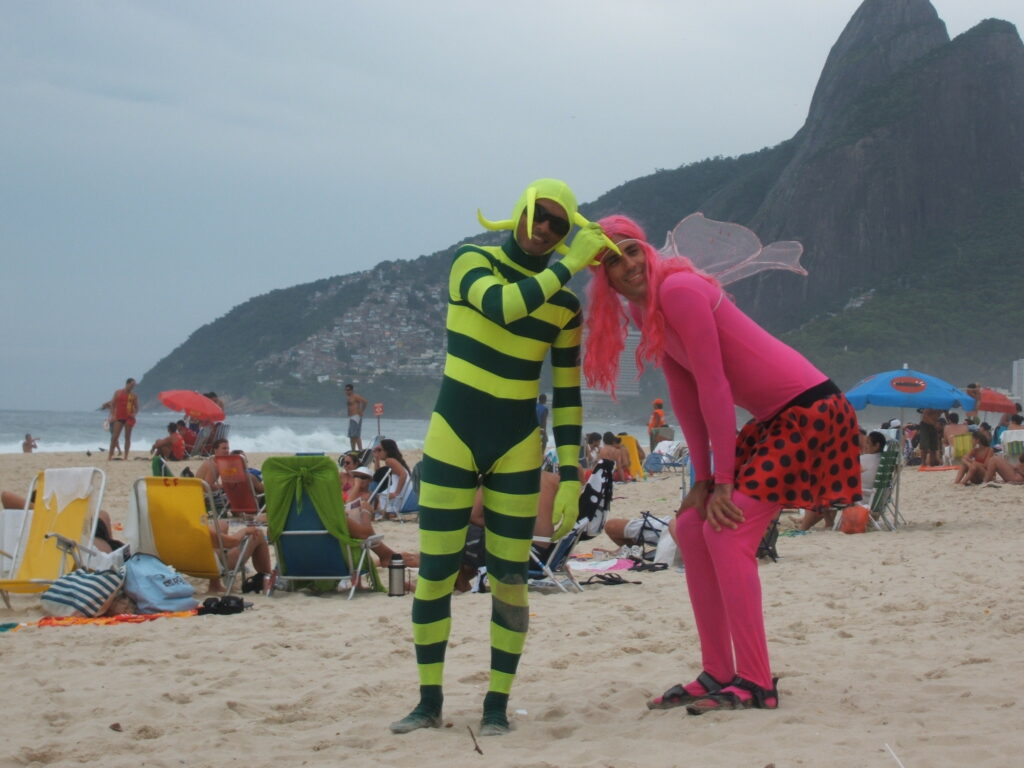
Days 1-3: Rio de Janeiro, Brazil: Carnival in Rio was always on my bucket list. It’s loud and crazy, but you can participate as much or as little as you want. Ipanema beach, where the girl comes from, is a laid-back version of the crazy going on downtown. It’s where the Carnival comes to you, and that’s where we danced and tooted our horns until we could toot no more. The next day at the beach, other things came to us, like frozen desserts, hot dogs, matte tea, bathing suits, hats, sunglasses, corn on the cob; it all walks past like a revolving mall brought to you by industrious locals. We indulged, to say the least.
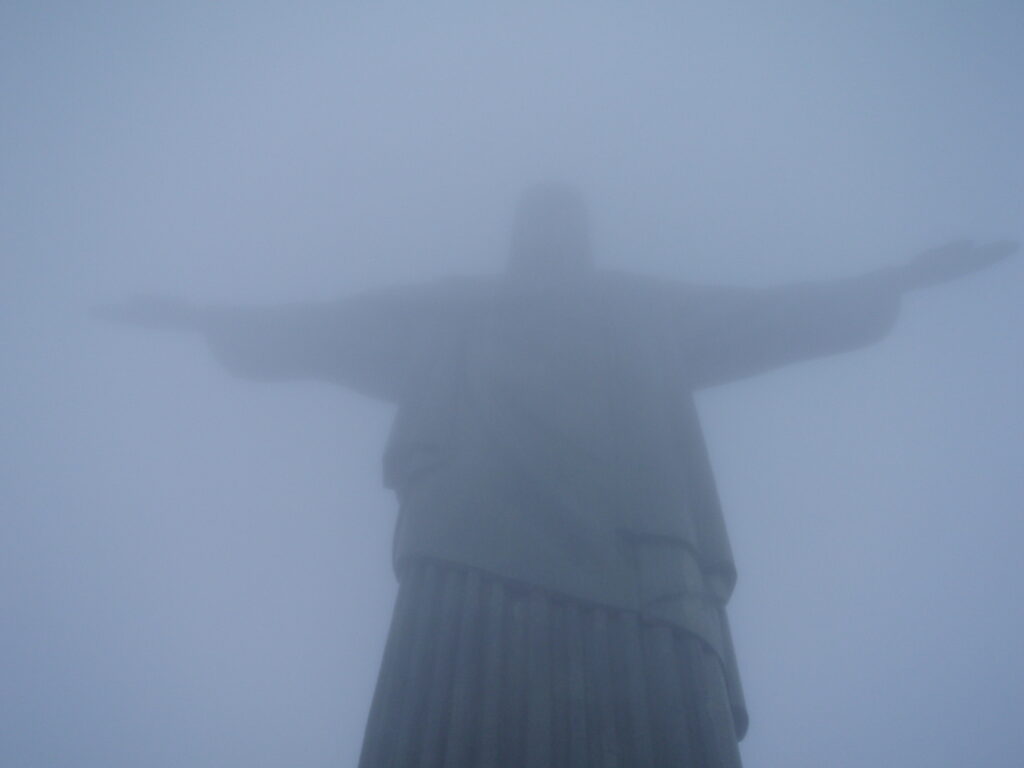
But Rio is also pious, proudly boasting the 4th largest statue of Jesus: the famous “Christ the Redeemer”. For others, you can click here. It’s a must hike to see this guy. He’s utterly enormous and quickly puts you in your place. Sculptors Paul Landowski and Gheorghe Leonida and engineers Heitor da Silva Costa and Albert Caquot constructed this behemoth between 1922 and 1931. It’s 30m (98 ft) high with a 28 m (92 ft) arm width. (Source) While gaping at those outstretched arms, we said a prayer for ourselves, all the sins we committed leading up to Fat Tuesday and safe ongoing travels.
Days 4-6: Cusco, Peru: On our flight to Lima, we innocently laughed and looked forward to the next stop on our time sensitive adventure. Lima is a huge bustling city where you can expect to have a marital spat, no idea why, but each time through this city, we found something to grouse at each other about. We named the first squabble “The Essential Oil Incident”. Upon arriving at our very shabby hotel and entering our room, which gave us the heebie-jeebies, Russ decided that he needed to cleanse the air with his trusty lavender oil. With no sense of smell, he liberally sprayed the scent all over the room while I wasn’t looking. Overpowered by the scent, I lost my shit and threw my boot in the corner. After trying to air out the room for a half hour, we finally got to sleep. The next morning, we had a palaver about what happened and added a new rule to our relationship agreement that states: the person, who has no sense of smell, does not get to spray perfume around the room and make the other person, with a very sensitive nose, sick to their stomach. A lesson was learned by all.
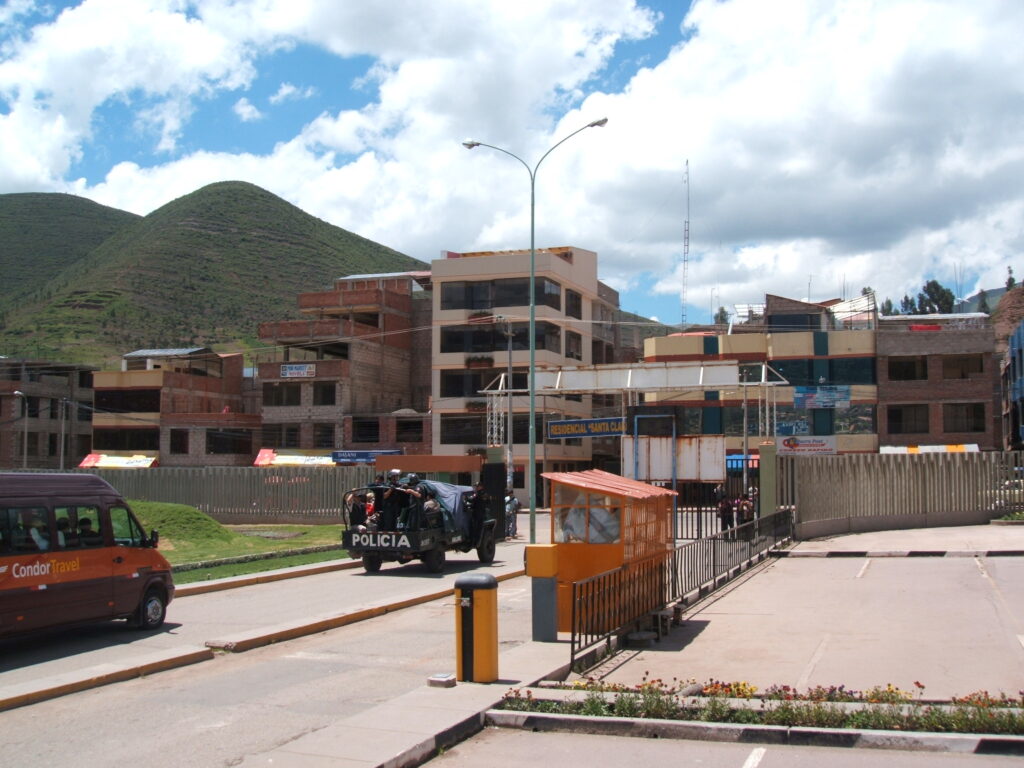
With no time to look around Lima, we quickly left for Cusco, where we gained 11,000 feet of elevation. Having no time to adjust, we took the altitude sickness pills that the travel doctor gave us at home. And, I don’t want to know what I would have felt like without them. There was an immediate physical challenge when we arrived at Cusco airport, by way of angry political protest, bottles being thrown, riots, the proverbial angry mob all around us. Forever accommodating, the hotels sent a police brigade to shuttle tourists to their hotels “safely”. We climbed into the back of a dirty dump truck with our luggage, looking more like prey than tourists, and were whisked to the center of Cusco. From there, we had to walk uphill with luggage, lungs screaming for more oxygen, the guide jibber-jabbering at us about this and that. Who knows what he said, I was busy trying not to pass out!
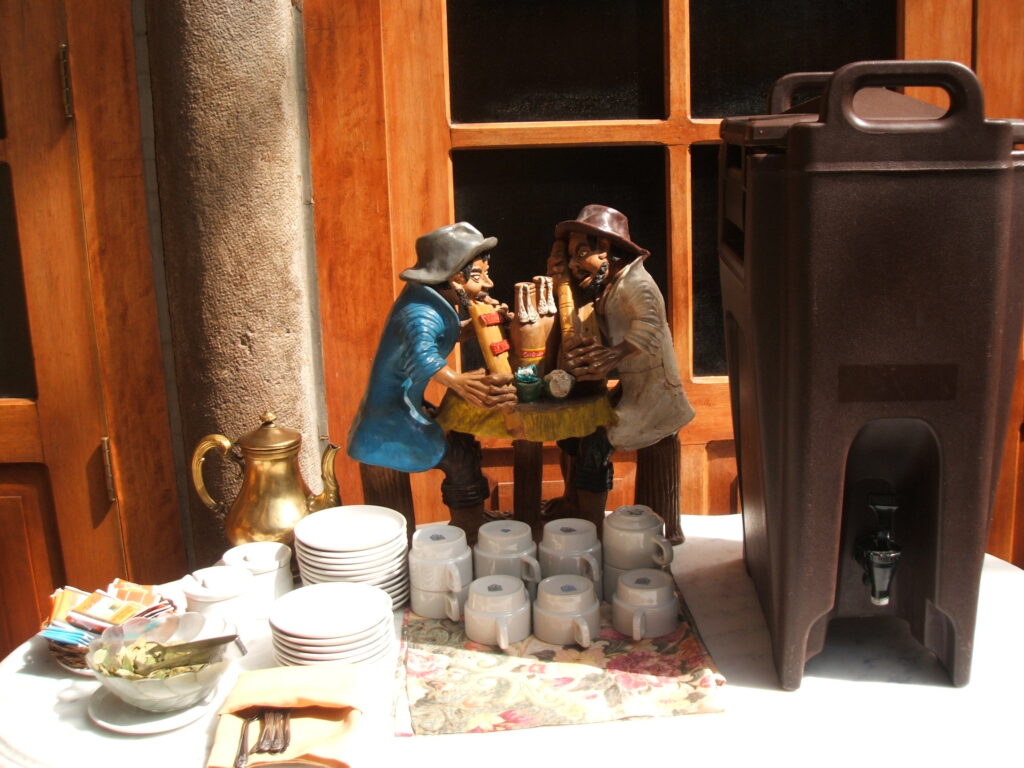
After check in, we adjourned to the lobby where we were offered some cocaine… I mean coca leaf tea. Perfectly legal here in Peru, but do not take any home with you. It’s the way locals deal with altitude sickness, but since we already had our pharmaceuticals, we did not partake.

Other local specialties were on the menu though, like alpaca and Cuy. I’m not sure why we ate that cute little rodent, but we did. Cuy is Guinea Pig, a lucky charm for Peruvians, kept as a pet until it’s his time to be dinner. If you don’t fancy eating something as tough as roadkill and have moral issues about eating cute animals, just skip it. No, I haven’t eaten roadkill, I’m just postulating that it might be similar.
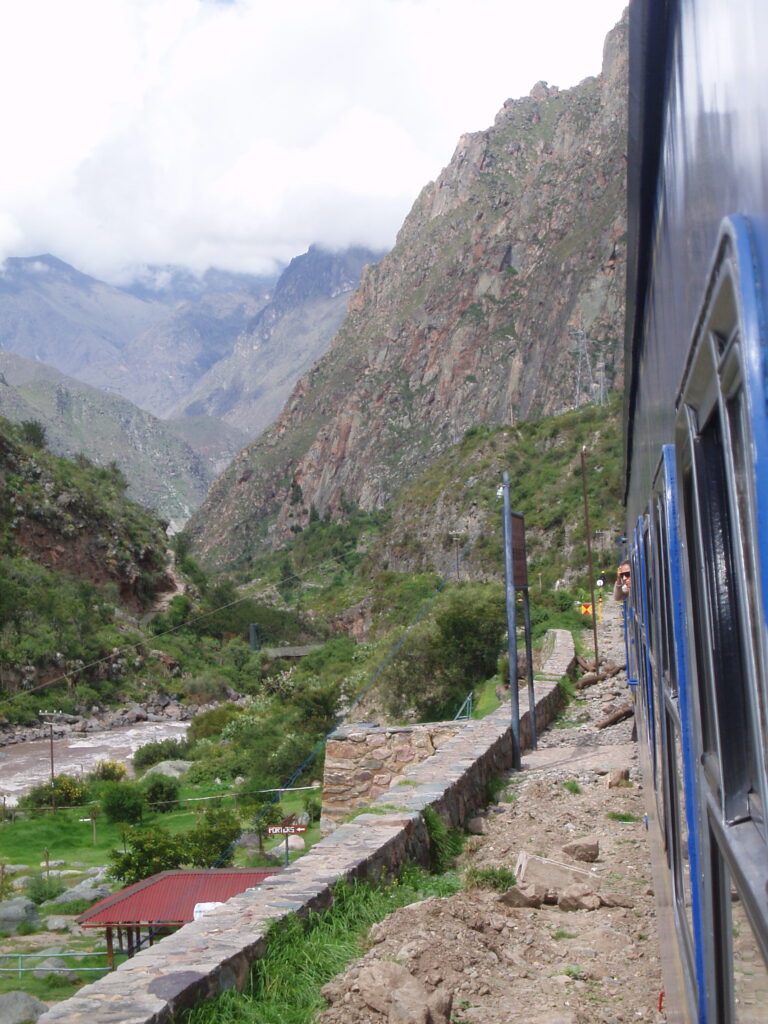
Cusco is more than a beautiful city with strange food; it’s the jumping off point to Machu Picchu. There is a zigzag train that will take you down the mountain to Aguas Caliente, which lies at about 6,600’. The train goes back and forth in a zigzag pattern, since the switchbacks are too tight for a train to maneuver. So, when it gets to a switchback, it just switches tracks and reverses direction. It’s as cool as it sounds.
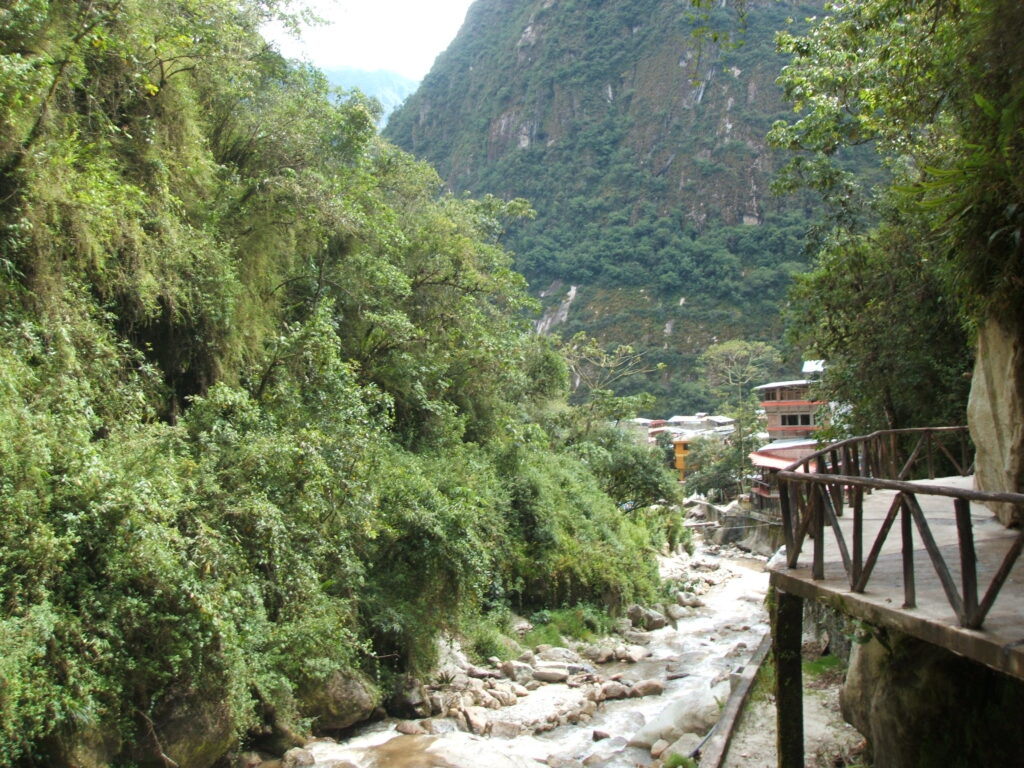
Aguas Caliente, on the other hand, is hot as hot springs, and is the base camp for hiking or busing to Machu Picchu, which lies at about 8000’. We bused to the site, time being of the essence, and a little walk later, we arrived. There is nothing to prepare you for your first sight of Machu Picchu. It’s just magical. There is some energy there, that just gets you, or you get it. There are also alpacas that get you, if you don’t move out of their way!
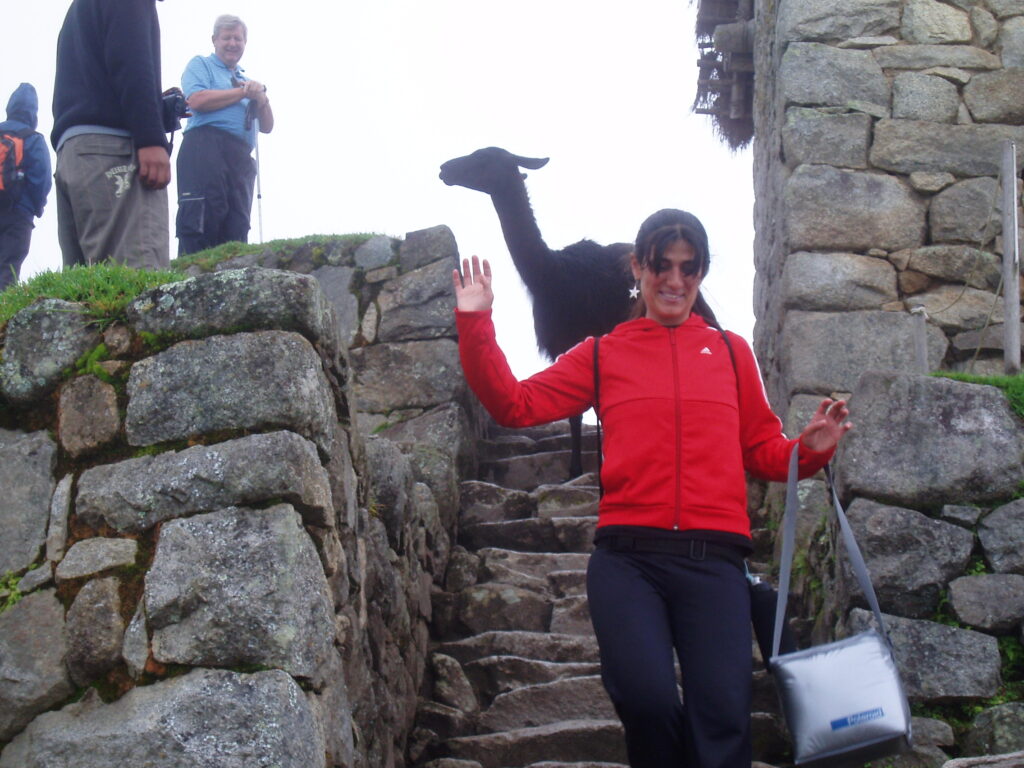
There are two parts to this 15th Century Incan city of the clouds, Machu Picchu, the main part of the site,
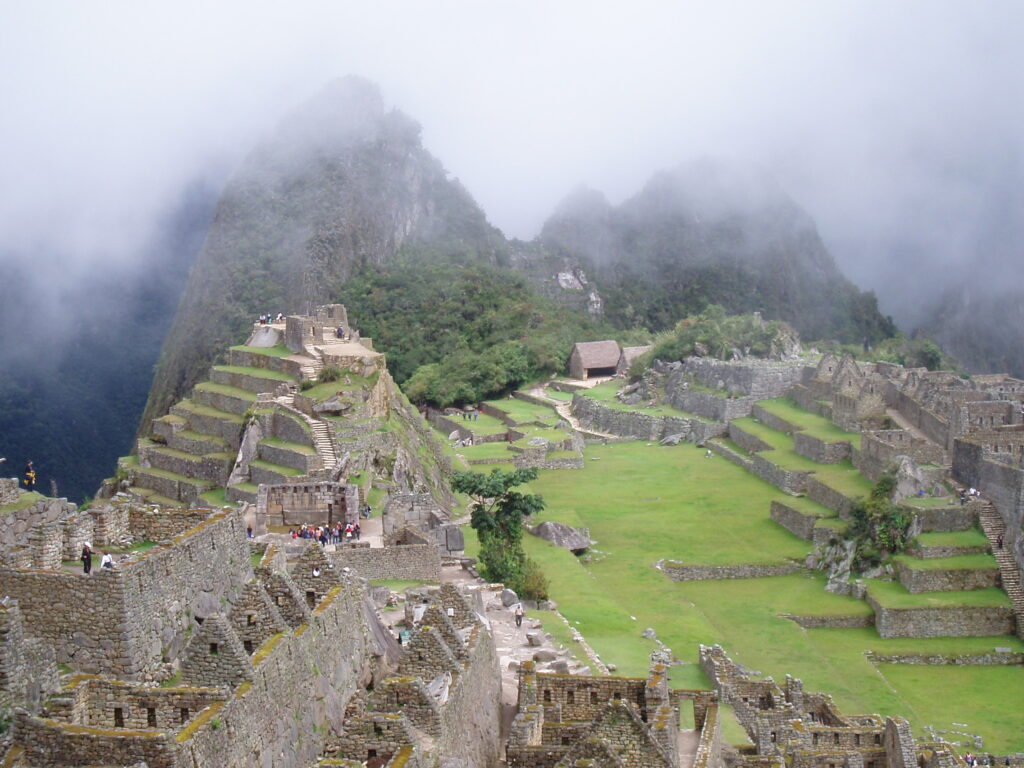
and Wayna Picchu, which is so steep, you should plan to climb on a separate day.
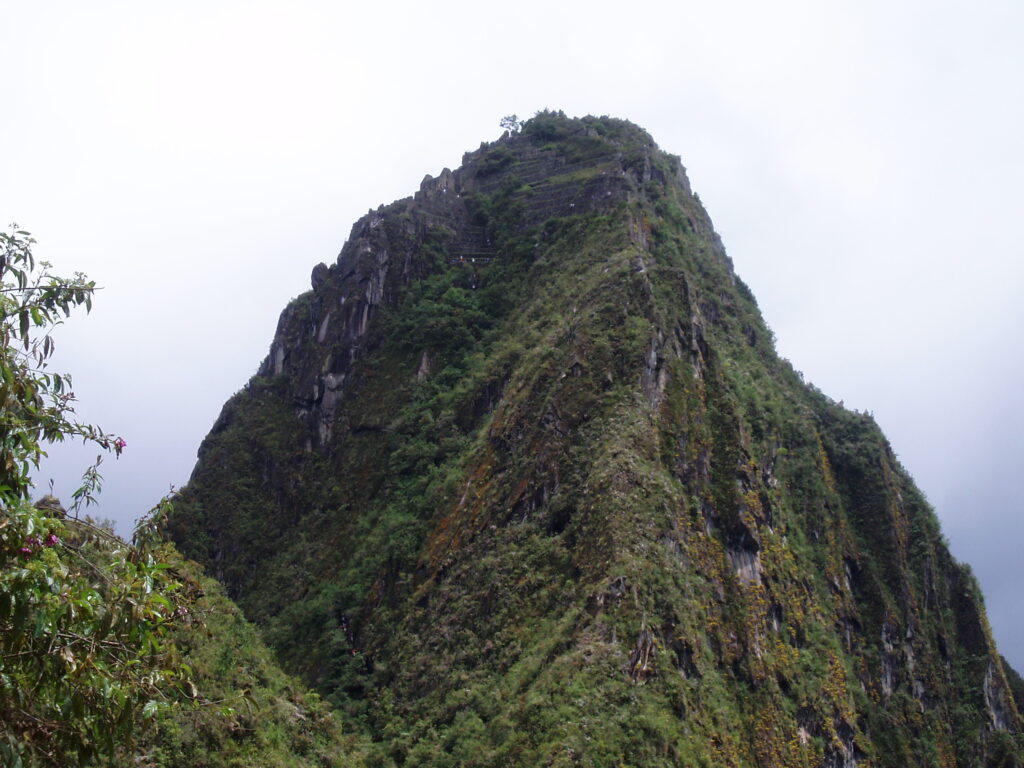
The stonework is first class and has stood the test of time. The place is a like a maze, and every corner offers a new discovery. There are altars and temples, as well as little houses where people lived. The “Temple of the Sun” and the “Room of the Three Windows” are two special places not to be missed. Machu Picchu was a royal estate, but common people lived here too and worked the land, planting crops in the terraces that give this site its unique look. This place changed me forever, and I will never forget it. As we made our way back to Aguas Caliente, I contemplated the life these people lived here and looked forward to soaking in the same hot springs that they did so long ago.
Days 7-10, Galapagos Islands: It was time for us to reverse course just like the zigzag train and say goodbye to Peru, and hello to Ecuador. This meant flying through Lima again, which brings us to drama number two, which we named “Blame it on Lima”. Due to fog in Cusco, which is common in the mountain region, our flight to Lima was cancelled. Dejected, we stood in a long line to get rebooked, and the only flight we could get would bring us to Lima a few minutes before our connection to Quito was to depart. We arrived in Lima and ran at breakneck speed to our next gate, and as we arrived, we watched with dread as our plane pulled away from the gate. I’ve never missed a plane in my life. I was mad. Not only, were we stuck in Lima, but we were going to miss getting on our boat in the Galapagos.
Again, we stood in a long line, but this time a gaggle of American retirees took us under their wings. Armored with sets of parents going to battle for us, we all got rebooked the next day to Quito. We spent the rest of the afternoon on the phone with Adventure Life, our Galapagos tour company, arranging a shuttle to bring us to our boat, which was somewhere in the Galapagos Archipelago. That settled, we needed a place to sleep until our flight, which brought us to the Ramada Costa del Sol at Lima International Airport. We felt a sense of accomplishment, as we walked over to the only hotel at the airport, all our troubles miraculously solved. We approached the desk and asked for a room. Yes, there was a room, for $233 a night. I was speechless for a few minutes. That was a lot of money to sleep for a few hours, especially in South America, where costs for nearly everything are much lower than the U.S. I tried to negotiate, but he was having none of it. I emphatically said, I will not pay that much for 8 hours of sleep, walked away, sat on the lobby couch and cried. Russ tried to console me. We discussed the only other option which was to take a taxi to a normal hotel in the city – the city of Lima, which clearly had it in for us. I was exhausted. Russ made the call and handed over his credit card. We added another rule to our relationship agreement: never visit Lima again.
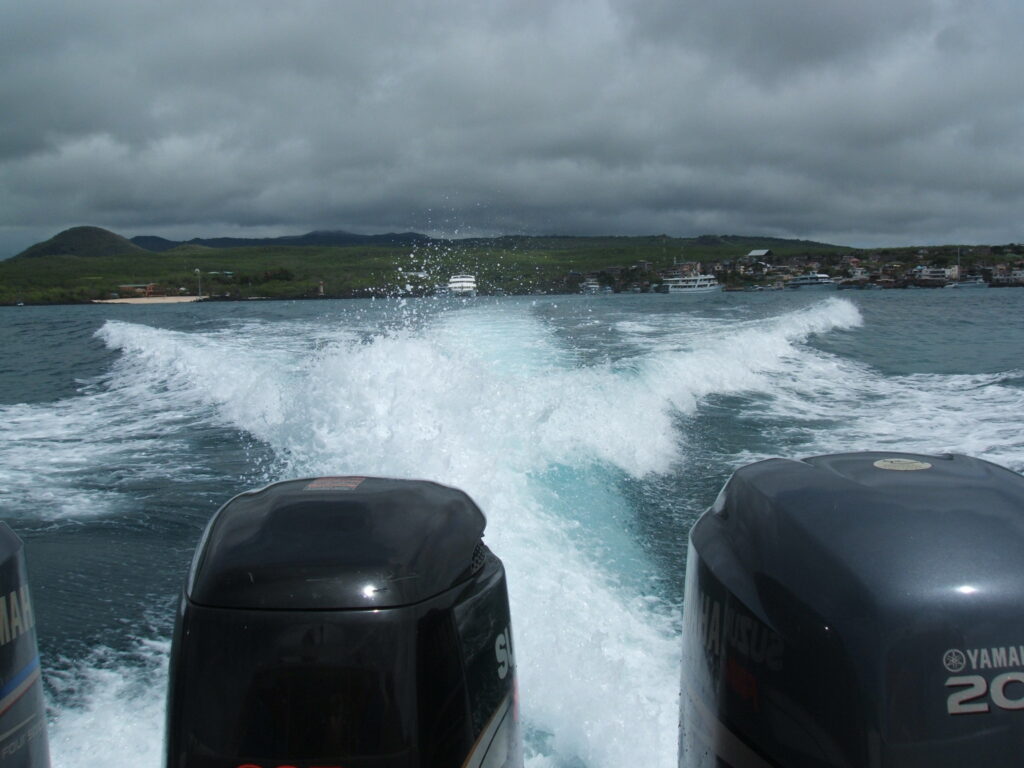
After all that turmoil, we finally escaped Lima, flew to Quito and then on to San Cristobal in the Galapagos. Adventure Life had a speedboat ready for us to rendezvous with the Estrella del Mar in record speed, which left us fairly green from being violently jostled for an hour and a half. By the time we got on the tour boat, we were ready for our Dramamine, and luckily, just in time for an excursion to get us on solid land for a while. Our boat had about twenty guests, and our cabin was tiny. Small boats are the norm here though, in order to adhere to conservation rules. Officially, “All boats cruising the Galapagos Islands must endure a rigorous process of approval on many technical and logistical aspects to be allowed to operate in the National Park. The sites visited, time of the day and activities allowed, and even the maximum number of passengers, is regulated in order to make the least impact on this fragile ecosystem. Private owned yachts are not allowed to visit the Island’s points of interest but are allowed to dock on the main ports with an official approval.“ (Source) They are serious here about protecting this delicate ecosystem, and we gladly took on the responsibility during our short visit.
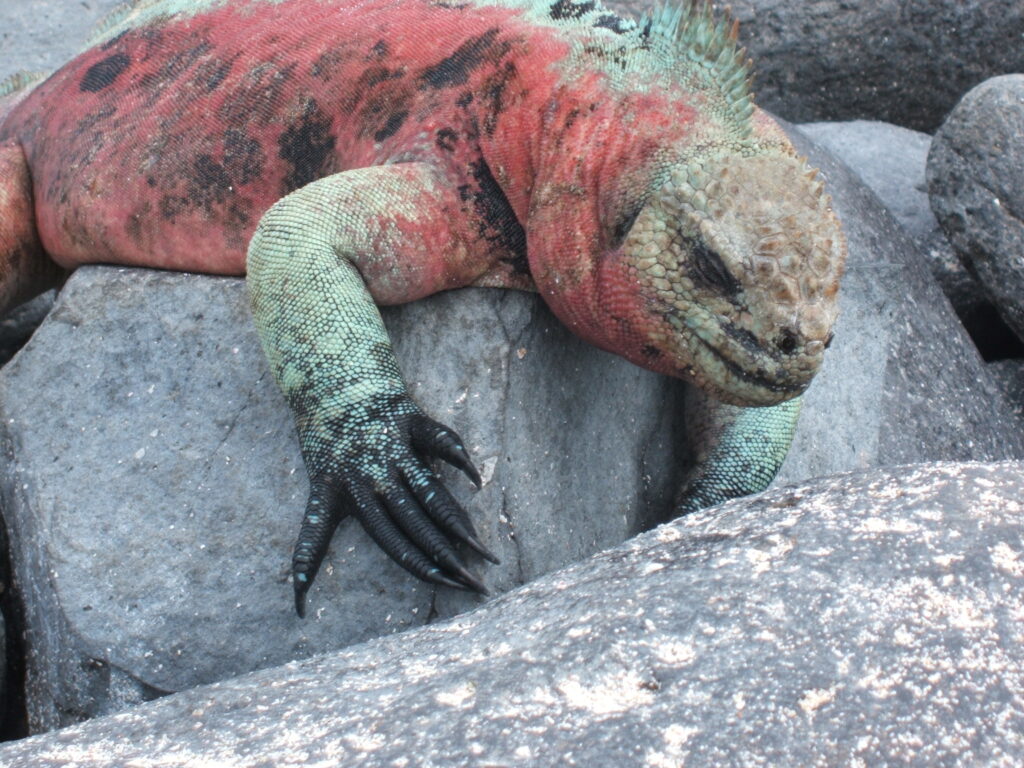
Our first well deserved excursion was to Española, which is full of seals, sea iguanas, hawks, frigates and the ever special, blue footed boobies. We were instructed to stay on the path, and not touch anything or drop anything, but take pictures to our hearts content. I felt like I was imposing on the private moments of these animals, who have no fear of humans, and mainly, ignored us, as they went about their business. The Galapagos are volcanic islands, which you can see evidence of in the rocks and soil underfoot. Next stop was Floreana, which featured flamingos, skates and sea turtles. We were allowed to walk among the skates, being careful to shuffle our feet to avoid stepping on them and getting stung. Snorkeling here resulted in sea turtle sightings – squeeeeee! Isabela island had more comedic sea iguanas; and whales, dolphins, and sea turtles were spotted from the boat. They seemed to accept us as part of their world, probably since they are protected, no boat or human harms them, as a rule. On our way to Santa Cruz dolphins gave us an escort, seemingly playing chicken with our boat, and whales came up nearby for air. Our environment was just brimming with life, and we felt part of it.
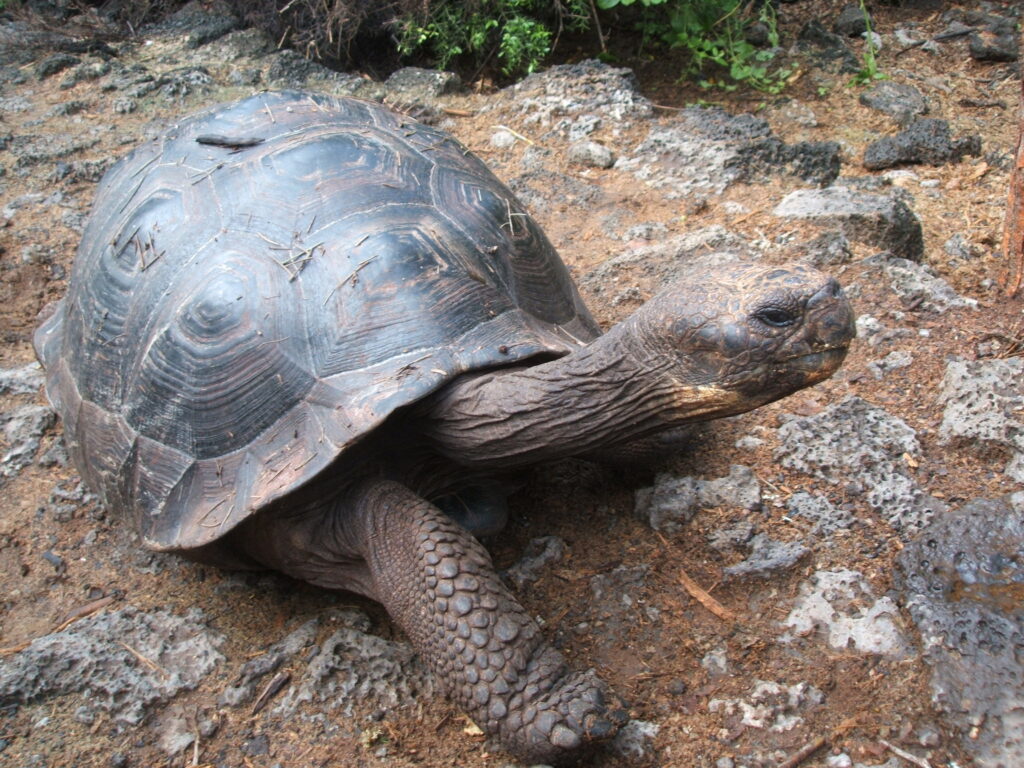
Our final destination in the Galapagos was the Charles Darwin Center for Tortoise Breeding which showcases tortoises at every stage of life, from egg, to baby, to adolescent, to middle aged, and old, like Old Lonesome George. I feel blessed to have met him before he died in June 2012 at the age of 102. He was discovered by his human, Fausto Llerana, who took care of him for forty years. Tortoises can live to 150 years old, and scientists say it’s due to their very slow metabolism. I think it has to do with their calm nature, which I, for one, could certainly learn from. Tortoises don’t worry about time, they are never rushed, and the reward for all that is long life. The islands have been here for 4.2 million years, and, in contrast, we spent a mere four days here.
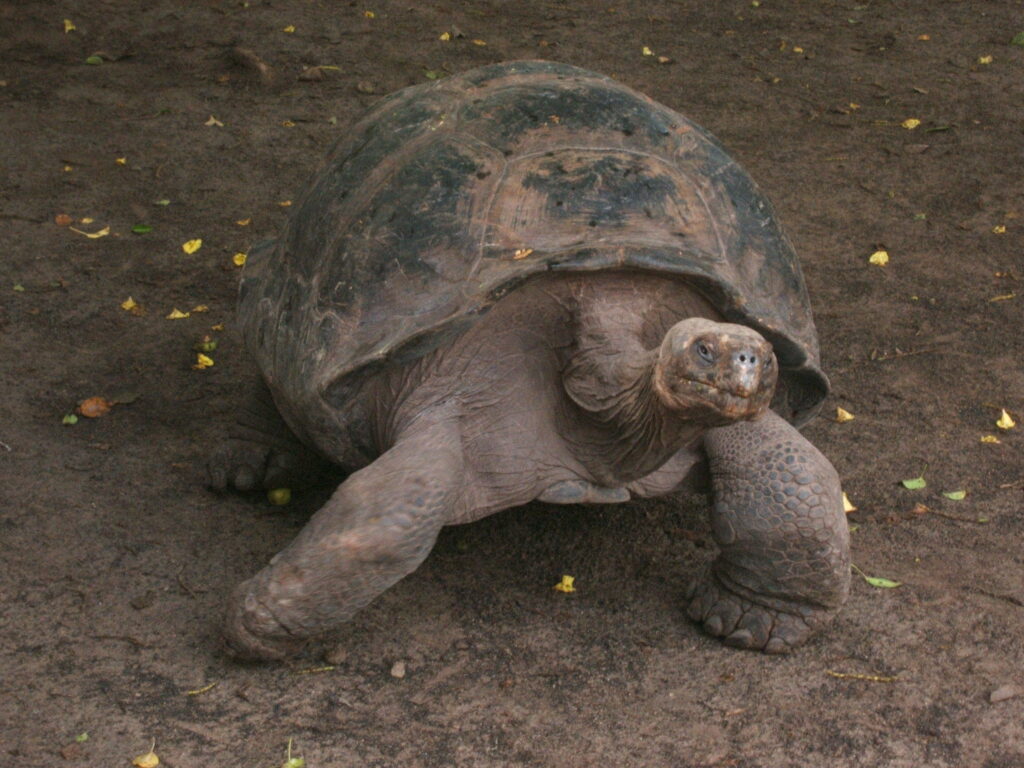
On our way back home, the altitude sickness meds finally wore off and feeling came back to my heels. What didn’t wear off were my impressions of South America, a vast continent with very different cultures and environments, and, in our short time here, we just scraped the surface. I think you could spend a lifetime here and still not experience everything this wild place with warm fun-loving people has to offer.
¡Viva América del Sur!
Photographic Journey: Since humans are not allowed to disturb nature in the Galapagos, there are decaying animal carcasses along the paths we walked on. Russ made a point to take photos of them, whereas I took photos of the live ones. Since the Galapagos are a visual experience, I created a photobook “Life and Death in the Galapagos” of our best pictures from this trip. Do enjoy!
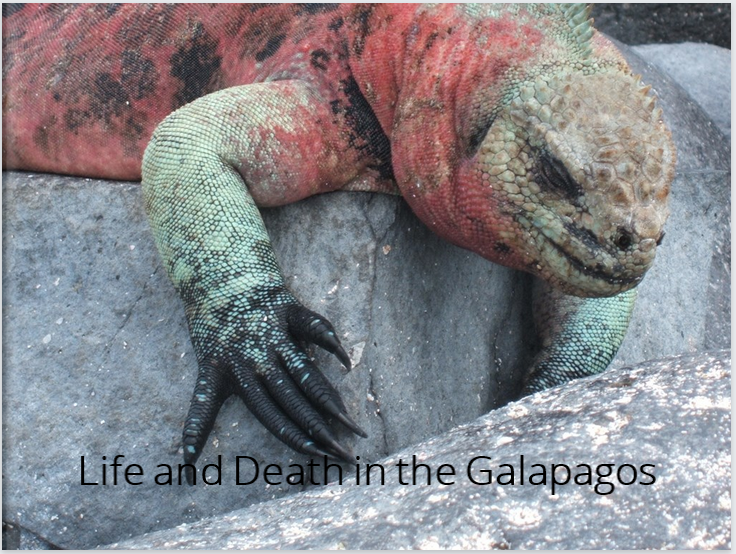
Life and Death in the Galapagos – A Photographic Journey
Take a photographic journey through the wilds of the Galapagos Islands, showcasing the unique animal species found here.
